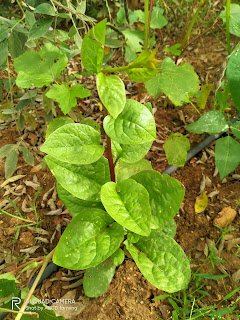Hey, Hi guys Good evening. I would like to share you my Experience on growing Broccoli. Avoid these mistakes i made, when growing broccoli.
Growing Broccoli from seeds
Purchased broccoli seeds from Bighaat website. The seeds are from Bejo company and variety name of the Broccoli is Lucky. Sown seeds at the beginning of October near by the raised bed of pigeon pea. At the beginning it was all growing well. I directly sown the seeds. The water irrigation is through drip. At the beginning everything was fine as you can see in the image.
Broccoli growing stages and growing seasons
There are four stages of growing Broccoli. The Broccoli takes 50-70 days to complete from seed sowing to harvest Broccoli. Broccoli growing season is like starting transplanting seedlings from February and July. Mostly the Broccoli are grown in the months of Feb - Apr and Jul - oct. This vegetable usually planted in spring, where the temperature is approximately about 60-65 F. It also grows well in cool-weather summer. In each stage of broccoli it requires different temperature to thrive well. The growing stages of the Broccoli are 1. Germination stage 2. Seedling stage 3. Vegetative stage 4. Flowering stage.
Broccoli after few days of sowing seeds
I applied poultry manure when preparing raised beds. And after that I have sown the seeds. After 15 days I observed it is having stunted growth, I applied cow dung nearby saplings. It went well up to 1 month. Lately I observed yellow spots on the leaves. I just left as it is... Didn't sprayed anything. That leaf has fell down. Thought it was recovering.
Mistakes to avoid when growing broccoli
In the plot I planted only drought resistant plants. Such as Brinjal, bottle gourd, pigeon pea, cluster beans, Malabar spinach, flat beans, etc...
Hence, I didn't watered these plants very often.
After 76 days I observed curd is forming on the broccoli. Suddenly within three days it bulged to a certain size as you can see in the image.
I thought the size will increase, but the size didn't increased. Rather the curd was turning to form seeds as shown in the image.
As you can see in the image, the seeds are forming. The dried dots are the seeds which are forming.
Points to remember for Broccoli growing
1. Don't plant them in shade.
2. Broccoli needs more water.
3. If you are going large scale cropping, consult broccoli farmer who already doing broccoli farming.
4. Before large scale farming, search for buy back dealers. There a firm in Bangalore who exports exotic vegetables. Farm Exim, chamrajpet, Bangalore. Mobile no: +918884111995





































